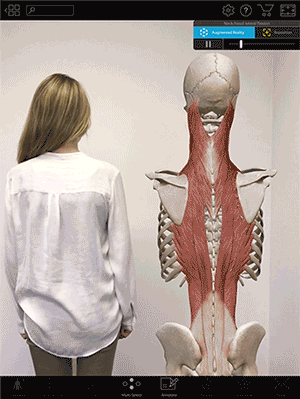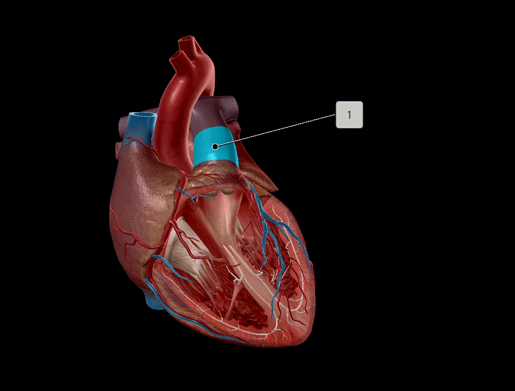5 Ways to Gamify Your A&P Classroom with Visible Body
Posted on 5/27/22 by Sarah Boudreau
A&P classes aren’t all fun and games… but maybe they can be.
The term gamification refers to adding game elements to non-game tasks. When it comes to education, gamification can help students learn new material through game elements like strategy, competition, and imagination.
Many anatomy and physiology courses are dependent on rote learning, which can make it difficult to keep students engaged. Gamification can help!
One way gamification enhances learning is by increasing student motivation—after all, who doesn’t like a little competition? Students become more engaged in the course material, and games can also help students get into a “flow” state of focus.
Gamification can lead to better learning retention as well. A study of over a hundred anatomy students at a medical school in Singapore suggested that “enhanced meta-cognition and factual recall had taken place” among students with a gamified anatomy education.
In this blog post, we’ll explore five gamified anatomy & physiology activities using Visible Body’s 3D models!
1. Dissection Jeopardy
Jeopardy is one of the most popular classroom games because it’s a simple, direct way to review information.
In this version of the game, ask students to access Visible Body Suite on their mobile devices or computers.
Ask students to access the regional or system view that best corresponds to learning objectives. Students will find and identify the body parts described in the Jeopardy prompt using the dissection tool.
For example, if the Jeopardy prompt was “This thorax muscle is the principal muscle of respiration,” the students would use the dissect tool to find the diaphragm.
Ask students to use the drawing tool to draw arrows or circle their answers, then raise their hand to “buzz in.” .jpg?width=515&name=My%20project%20(4).jpg)
Image from Visible Body Suite.
If you want to foster more collaboration, this activity could be done in small groups. If you’re leading this as a group activity, try adding a leaderboard! While a class-wide leaderboard might be too overwhelming to juggle while teaching, assigning points to groups would be a more manageable task and can motivate students to achieve more.
Not only does this activity promote recall—it also challenges students to use spatial reasoning to think in 3D. Working in 3D can help develop students’ visuospatial processing, an important element of health sciences professions.
2. Muscle action challenge
Taboo meets charades in this activity inspired by this free AR lesson plan. The AR feature is optional for this activity, though it may be helpful.
First, break students up into pairs. Have one student access a model of a random muscle action animation in VB Suite and describe it to the other student. The other student must follow their peer’s directions and perform the muscle action. Importantly, students must use the proper directional and anatomy terminology when giving directions.

GIF created using Visible Body Suite.
Once the second student matches the muscle action described by the first student, the two students switch spots and move on to the next action.
The pairs of students race to see how many they can get through before time is up. The team that has worked through the most muscle actions wins!
Through this activity, students can practice their vocabulary, interact with their classmates, and probably have a few laughs along the way.
3. Flashcard game show
The first of our Flashcard game activities is adapted from our blog post “Four Ways to Teach DNA Structure with Visible Body,” but Flashcards are an excellent addition to any life sciences classroom!
For this activity, you can make your own Flashcard deck and write prompts using the text feature, or you can use one of our 50+ pre-made A&P Flashcard decks.
Using a smart board or other projector, project the Flashcard deck so it’s visible to all students. Divide your class into teams of 3-5, and ask each team to choose a leader who will be responsible for submitting the team’s answers.
Show your class the first side of the Flashcard and give them a set amount of time to consult their notes, discuss, and form their answers. Group leaders should write down their team’s answer on a piece of paper or a small whiteboard and “buzz in” by raising their hand.
You can flip the Flashcard by clicking on it, revealing the correct answer. Each team who answered correctly gets a point—and the first team to answer correctly gets a bonus point.
One great feature of Flashcards is that decks are shareable, which means that students can study from the same decks at home.
4. Around the world
This second Flashcard activity gets students active and moving around the classroom.
To prepare, have a deck of Flashcards at the ready, projected so all students can see it. Have students stand in a circle—or, if your classroom space allows it, arrange chairs in a circle.
Pick a pair of adjacent students as a starting point. The two students are given a flashcard prompt and the first student to answer correctly wins. The winner stays put and the losing student stands behind the winner in line. The line shifts forward and the winner and the new student square off.

Flashcard GIF from Visible Body Suite.
Play until one student makes it all the way around the circle! “Around the world” can take up a whole class, so it’s a great idea for a review day before a test. Since the Flashcards are projected for all to see, students can review the information even when it’s not their turn.
5. Roleplaying rounds
In a toned-down, virtual take on grand rounds, students will act as medical professionals and will examine 3D pathology models as their “patients.”
Unlike the other games we’ve talked about that award points or have clear winners or losers, the game element in this activity is roleplaying. Roleplaying is a well-established pedagogical tool, including in anatomy and physiology pedagogy.
Divide students into small groups, assigning each group a 3D pathology model in Physiology & Pathology. The app features the following models to choose from:
- Atherosclerosis
- Tuberculosis
- Polycystic kidney disease
- Acute tubular necrosis
- Kidney stones
- Gallstones
- 20 musculoskeletal pathology models
After exploring the model, each group is asked to give a short presentation before the class on their “patient.”
Using the model as a visual aid in their presentation, each group will…
- Describe the symptoms the “patient” is experiencing
- Describe the relevant anatomy and physiology
- Describe how the pathology at play obstructs the physiology
Leave time for other students to ask questions, or, if the class is feeling quiet, you can ask follow up questions.
In anatomy and physiology education, it’s important to contextualize information so that students can see its application to their future careers and education. Exploring clinical contexts like in this activity makes students more engaged in the subject. Plus, in addition to learning and developing collaborative skills, your students will use high-order thinking to synthesize information for their presentations.
Want to learn more?
Check out these links for some further reading, watching, and learning!
- “A Beginner’s Guide to Augmented Reality in the Classroom” from the Visible Body blog
- “The Power of Gamification in Education” by Scott Herbert for TED Talks
- “Smart Assessments: Moving Beyond Exams with Dr. Cindy Harley” from the Visible Body blog
- “Introduction to the Use of Gamification in Higher Education” by Ziting Wang for the University of Chicago
Be sure to subscribe to the Visible Body Blog for more anatomy awesomeness!
Are you an instructor? We have award-winning 3D products and resources for your anatomy and physiology course! Learn more here.



